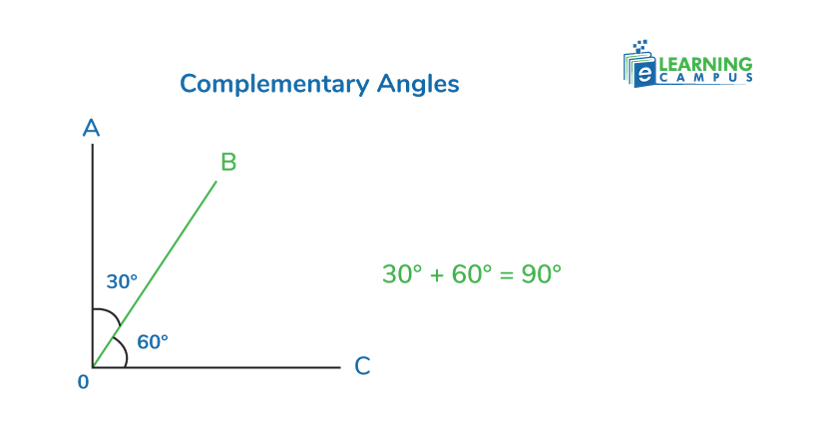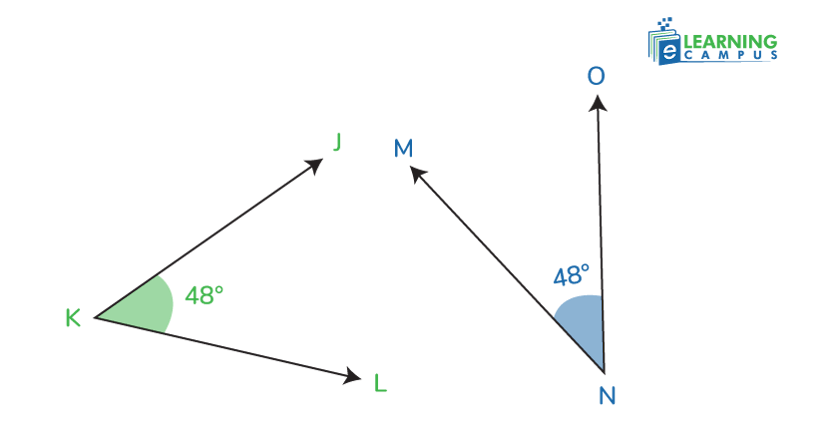Complementary Angles

When we hear about complementary angles, it seems like they are about complementing the angles. But complementary angles in Math are a whole different thing. They are about two angles that combine to make a right angle.
In this blog, you will learn what are complementary angles, what their types are, and how to find complementary angles.
What are Complementary Angles
Before proceeding to detail, let’s learn what are complementary angles. In Mathematics, the complimentary angles are those two angles whose sum equals 90 degrees. It can also be understood as the two angles that add up to 90 degrees are termed complementary angles.
Let’s look at the complementary angles examples. If there are two angles of 59 degrees and 31 degrees, their sum will be equal to 90 degrees. In this case,
- 59 degrees is a complement of 31 degrees.
- 31 degrees is a complement of 59 degrees.

Types of Complimentary Angles
Complementary angles add up to 90 degrees. Based on vertex or arm, complementary angles in math are divided into two categories, i.e, adjacent and nonadjacent complementary angles.
Let’s learn about these two complementary angles in detail.
Adjacent Complementary Angles
Two angles will be called adjacent complementary angles if they have a common vertex and arm.
In the figure given below, ∠AOB and ∠BOC sum to 90 degrees and have a common vertex, so they are adjacent complmentary angles.
In the figure below, two angles 48 degree angle and 42 degree angle, are shown. These two angles are considered non-adjacent complementary angles because they do not have the same vertex and arms.

Non-adjacent Complementary Angles
2 complementary angles are said to be non-adjacent if they have no common vertex and arm, but they still sum up to 90 degrees.
In the given figure ∠JKL + ∠MNO= 42 = 908 + 4

How to Find Complementary Angles
Let’s learn how to find complementary angles. We know that 2 complementary angles are complement to each other and their sum is 90 degrees. To find the complement of an angle, we subtract one complement from 90.
The complement of an angle with x degrees will be given as;
For example, to find the complement of 42 degree angle, we will subtract from 90.
So, the complement of 42 degree angle is 48 degree angle.
It means if one degree is 42 the other will be of 48.
Properties of Complementery Angles
The complementery angles are also called complementary pair. They possess some properties. The properties of complemantary angles are listed below.
- Complementary angles always add up to the 90 degree.
- A complementary angle can be adjacent or non-adjacent.
- Three or more angles, even if their sum is 90, can not be called complementary angles.
- For two complementary angles, each angle is a complement angle of the other angle.
- The two complementary angels will always be acute angle.
Complamentary Angles Theorem
The complementary angles theorem states that;
“If two angles are complement to any other (third) angle, then the 1st two angles are congruent to each other”.
Proof of the Theorem
Let’s prove the theorem with an example.

Let’s consider that ∠DOC is a complement to ∠AOB and ∠BOC.
We know that
∠DOC+∠AOB=90
∠DOC+∠BOC=90
It means that
∠DOC+∠AOB=∠DOC+∠BOC
∠DOC+∠AOB-∠DOC+∠BOC=0
∠AOB+∠BOC=0
∠AOB=∠BOC
Hence, we proved the theorem.
Hire Expert Math Tutor
Are you looking for an expert math tutor to teach your kids? We can help you. We have professional teachers with years of experience teaching math.
